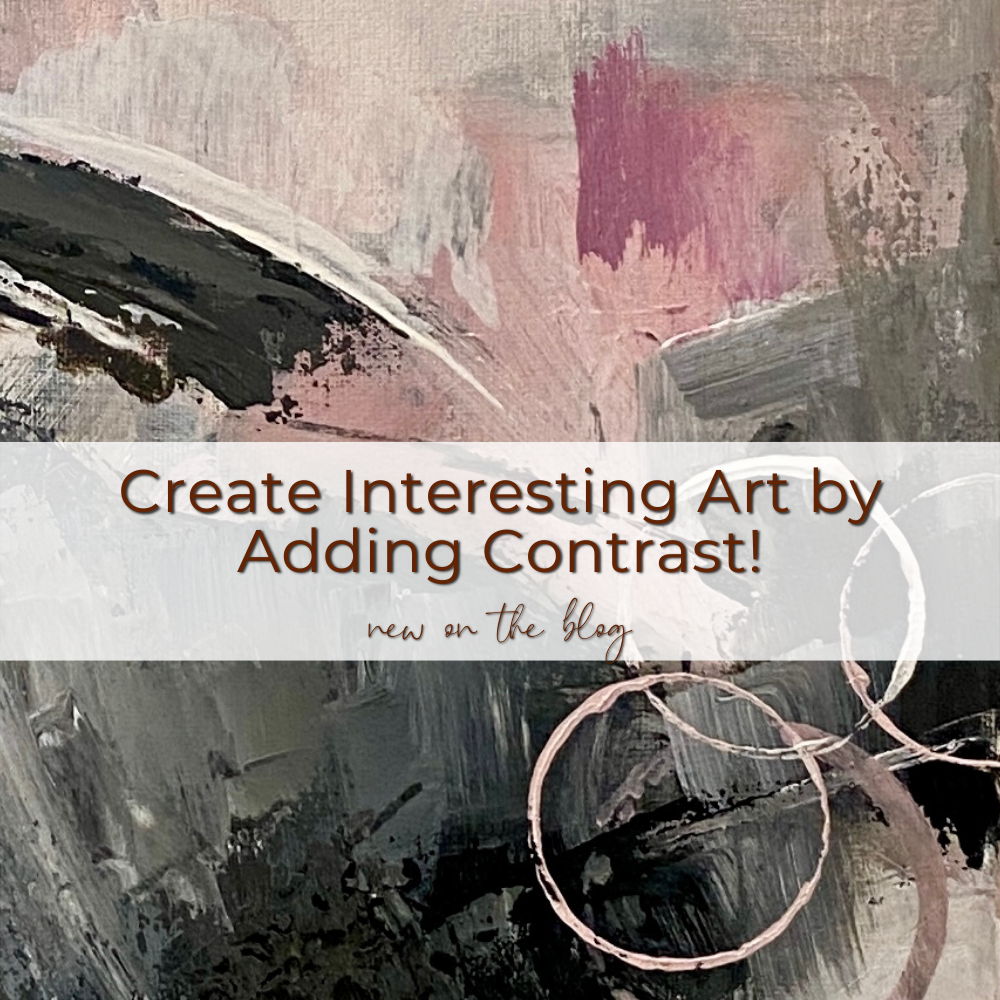
Imagine walking into a stylish room that looks like it’s straight out of an interior design magazine. All of the surfaces are smooth and all the edges are straight, except for one thing. Your eyes go straight to the fuzzy, curvy rug or floor pillow. The contrast in shape and texture give the room so much impact!
I want to encourage you to create the same effect with your painting. Here are some ideas for how to do that:
Contrast in Shapes
What kinds of shapes do you use regularly in your art, organic shapes or geometric ones? A painting that has half geometric shapes and half organic shapes will not be very effective, because neither kind of shape will stand out.
However, if you have a painting filled with all geometric shapes and then you add one organic shape, that shape will create contrast, excitement, and interest. Or add one geometric shape to a painting that is filled with organic shapes!
Contrast in Scale
The same concept applies to scale. Let’s say that I’m painting straight lines on my canvas, and they’re all wide and bold—about 2-3” wide. Then I take a tiny brush and add a thin line. The pattern is disrupted in the best possible way!
When you are three-quarters or so done with a painting, step back and evaluate the scale of the elements in the painting. Are they all too similar? Do none of them stand out? If so, add either a very small or very large element and watch your painting come alive.
Contrast in Texture
Just like in the interior design example above, a contrasting texture can be very appealing. If your painting is completely flat, consider adding the equivalent of a fluffy rug: add modeling paste, crackle paste, or a medium that makes your paint hold stiff peaks like frosting. Not only will this make the viewer want to touch your painting, it’ll make it more pleasing as a whole.
It’s All About Juxtaposition
Do you come alive when you’re with a certain friend, one that brings out the comedian or the talk show host in you? Any color, shape, or texture in your artwork is not isolated—they are placed next to a neighbor who either lets them shine or helps them blend in. Make sure that you’re intentional about juxtaposing your elements and creating just the right amount of contrast.
Many times during my coaching sessions with artists just like you I’m able to point out a lack of contrast in a painting that the artist feels is unfinished or stalled out. It’s satisfying for me and my artist client as they determine how they will add contrast and then carry the plan out. The result is a successful painting and a happy painter!

